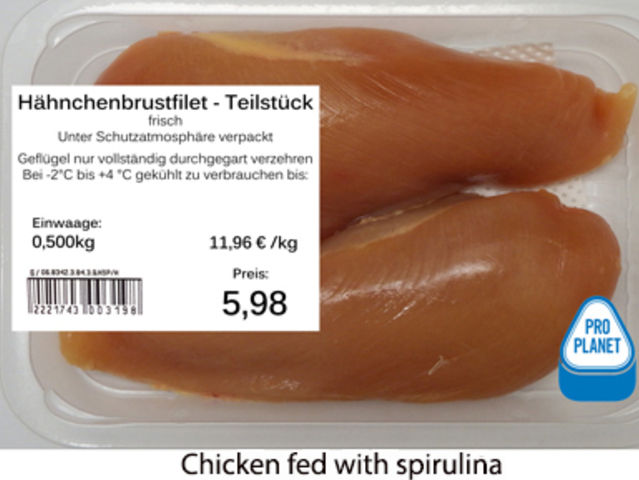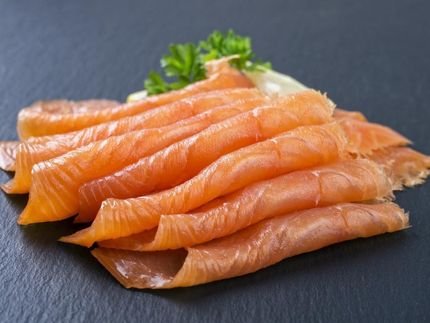How well are alternative feedstuffs received by the end consumer?
Researchers at the University of Göttingen examine the effect of providing information
Despite shifts towards vegan and vegetarian diets in Western cultures, demand for animal protein persists. Alternative protein sources are required to nourish the growing world population without compromising on sustainability. Researchers at the University of Göttingen and the University of Alberta, Edmonton, Canada, investigated consumer preferences of alternative feedstuffs. Specifically, the researchers looked at the effect of information regarding algae and insects in the food chain. The results were published in the journal Food Policy.

The research team presented the test subjects with chicken that had been fed, for example, spirulina algae.
Dr Brianne Altmann
The researchers photographed chicken breasts from animals fed with spirulina or insect meal and rendered the photos to imitate market-ready products. The chicken breast products were labelled with health or sustainability claims to further understand preference motivation for alternative feedstuffs. Two groups of respondents (around 1000) then completed an online questionnaire, where they were shown two different chicken breast products and asked which one they would purchase. One group received the information available on the package, such as labelling and price. The other group received additional information regarding the feedstuffs and the feedstuffs were also identified on each product. Information on feedstuffs proved to be an important factor in influencing consumer preferences. Because spirulina drastically alters the colour of the end product, it is necessary to provide information to make these products marketable to consumers.
Surprisingly, the respondents liked the chicken breast reared with insect meal the most. However, when the feedstuff was identified, only sustainability-motivated consumers continued to prefer insects as a feedstuff. “Therefore, the incorporation of insects into feed for poultry should be conducted with full transparency for the end consumer and feedstuffs should be labelled in order to avoid future backlash or mistrust,” explains Dr Brianne Altmann, lead researcher. “However, the increased exposure through having these products available on the market will likely increase their acceptance.”
Although spirulina has a history of being used as a feedstuff in some cultures, it is currently cultivated as a health supplement and remains much more expensive than soybean meal. Insects on the other hand, have recently been certified for use in poultry feed in the European Union. “One drawback within the current legislation hindering the sustainability is that insects for feed must be reared on certified feedstuffs, putting insect rearing in direct competition for the rearing of other poultry and livestock,” says Altmann “In order to increase the uptake and sustainability of alternative feedstuffs, advances in production, such as growth in scale and the incorporation of waste products, are urgently needed.”
Original publication
Most read news
Other news from the department business & finance

Get the food & beverage industry in your inbox
By submitting this form you agree that LUMITOS AG will send you the newsletter(s) selected above by email. Your data will not be passed on to third parties. Your data will be stored and processed in accordance with our data protection regulations. LUMITOS may contact you by email for the purpose of advertising or market and opinion surveys. You can revoke your consent at any time without giving reasons to LUMITOS AG, Ernst-Augustin-Str. 2, 12489 Berlin, Germany or by e-mail at revoke@lumitos.com with effect for the future. In addition, each email contains a link to unsubscribe from the corresponding newsletter.



























































